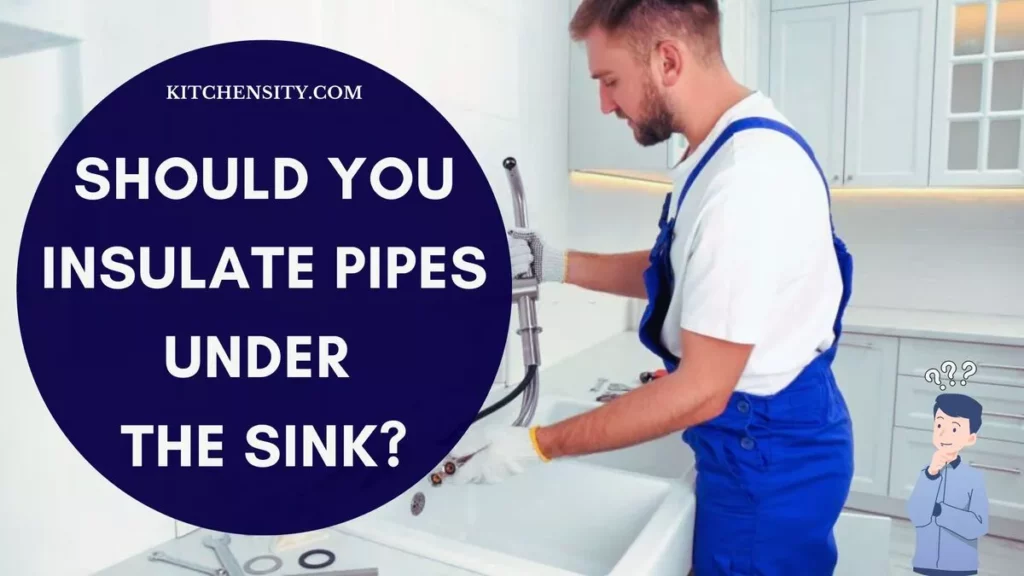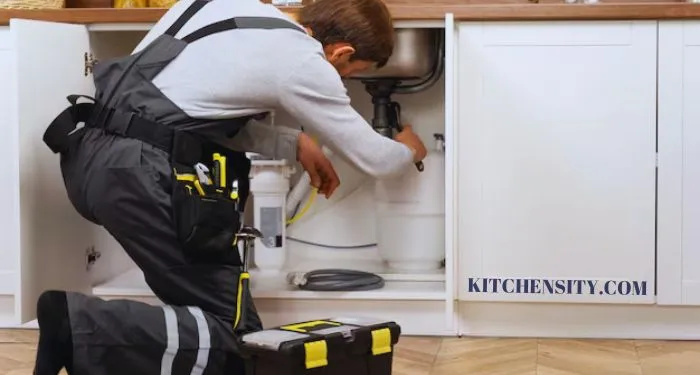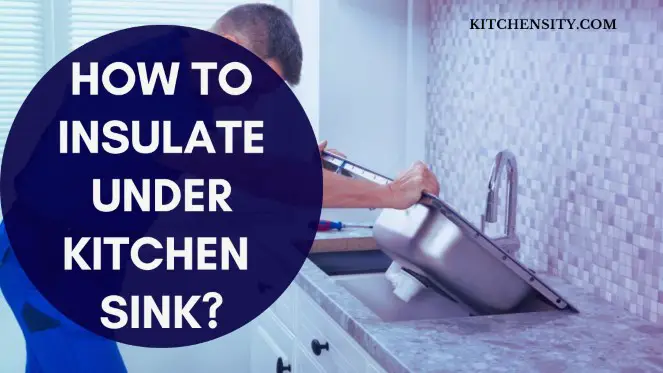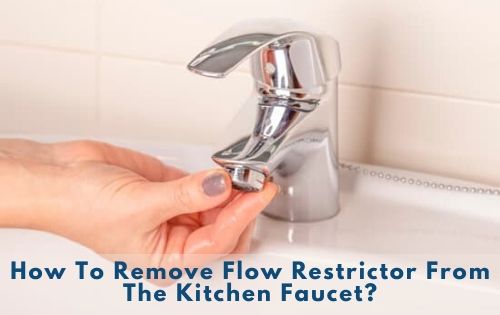Imagine a scenario where you turn on the tap to wash your hands, and instead of a stream of warm water, you’re greeted by an icy surprise. The culprit? Uninsulated pipes under the sink.
The inconvenience and potential issues that arise highlight the importance of addressing a fundamental question: Should you insulate pipes under the sink?
Let’s delve into the reasons behind this common household concern, exploring the benefits and considerations that underscore the decision to insulate, ensuring a reliable and efficient plumbing system in every home.
Table of Contents
- 1 Should You Insulate Pipes Under The Sink?
- 2 What Is The Need For Pipe Insulation Under The Sink?
- 3 Benefits Of Insulating Pipes Under The Sink
- 4 Should You Wrap Pipes Under The Kitchen Sink?
- 5 Types of Pipe Insulation Materials
- 6 How Do You Insulate Water Pipes Under A Sink?
- 7 Should You Insulate Pipes Under The Sink In Winter?
- 8 Should You Insulate Pipes Under The Sink In Summer?
- 9 Do Plumbing Pipes Need To Be Insulated?
- 10 How Do I Keep My Kitchen Sink Pipes From Freezing?
- 11 Will Pipes Freeze If The House Is At 60 Degrees?
- 12 Common Misconceptions About Pipe Insulation
- 13 Common Concerns About Under-Sink Insulation
- 14 Maintenance Tips For Insulated Pipes Under The Sink
- 15 Final Thoughts: Should You Insulate Pipes Under The Sink?
- 16 FAQs (Frequently Asked Questions)
Should You Insulate Pipes Under The Sink?
Yes, insulating pipes under the sink is essential. It prevents freezing in colder climates, ensures energy efficiency, and safeguards against potential water damage, making it a practical and beneficial investment for maintaining a well-functioning plumbing system.
Also Read – How to Insulate Under Kitchen Sink?

What Is The Need For Pipe Insulation Under The Sink?
The need for pipe insulation under the sink is essential for several reasons.
- Firstly, insulation helps prevent heat loss from the hot water pipes, ensuring that the water remains warm from the source to the tap. This not only contributes to energy efficiency but also results in cost savings by reducing the workload on the water heater.
- Also, insulating pipes under the sink is crucial in colder climates to prevent the risk of frozen pipes. Insulation acts as a protective barrier, minimizing the chances of pipes freezing and potentially bursting, which can lead to costly repairs and water damage.
- Furthermore, insulation plays a role in protecting against condensation. By minimizing temperature differences between the pipes and the surrounding air, insulation helps prevent condensation buildup. This not only preserves the integrity of the pipes but also prevents water damage and the growth of mold and mildew.
Benefits Of Insulating Pipes Under The Sink
Insulating pipes under the sink offers a range of benefits that contribute to the overall efficiency and functionality of a plumbing system. Here are some key advantages:
- Energy Efficiency and Cost Savings: Insulation acts as a thermal barrier, preventing heat loss from hot water pipes. This ensures that the water remains warmer for longer periods, reducing the workload on the water heater. The result is increased energy efficiency and lower utility bills.
- Prevention of Frozen Pipes: Particularly crucial in colder climates, insulation provides a protective layer that helps prevent pipes under the sink from freezing. Maintaining a stable temperature, minimizes the risk of pipes bursting due to freezing, avoiding potential water damage and costly repairs.
- Protection Against Condensation: Insulation helps regulate the temperature of pipes, reducing the likelihood of condensation forming on their surfaces. This is important in preventing water damage and inhibiting the growth of mold and mildew, which can be detrimental to both the plumbing system and indoor air quality.
- Extended Lifespan of Plumbing Components: By minimizing temperature fluctuations and preventing the negative effects of freezing and condensation, insulation contributes to the longevity of pipes and associated components. This can result in fewer maintenance issues and a longer lifespan for the plumbing system as a whole.
- Improved Water Quality: Insulation can also contribute to maintaining water quality. By preventing condensation and the growth of mold, it helps ensure that the water flowing through the pipes remains clean and uncontaminated.
- Reduced Environmental Impact: Certain types of pipe insulation materials are environmentally friendly. Opting for these materials benefits your plumbing system’s efficiency and aligns with eco-conscious practices, reducing the environmental impact of home maintenance.
Also Read – Best Insulation Under The Kitchen Sink
Should You Wrap Pipes Under The Kitchen Sink?
Yes, wrapping pipes under the kitchen sink is advisable. It prevents heat loss, reduces the risk of frozen pipes, and protects against condensation. This practice contributes to energy efficiency, lowers utility bills, and helps maintain a functional plumbing system. Whether done as a DIY project or through professional installation, wrapping pipes is a practical measure for a well-maintained kitchen plumbing system.
Types of Pipe Insulation Materials
Several types of pipe insulation materials are available, each with its unique characteristics and applications. Understanding these materials is crucial for choosing the right insulation for your specific needs.
- Fiberglass: Fiberglass insulation is a common choice known for its affordability and effectiveness. It comes in flexible rolls or rigid boards and is suitable for various pipe sizes.
- Foam Board: Rigid foam boards, such as expanded or extruded polystyrene, provide excellent insulation. They are moisture-resistant and offer a high level of thermal resistance.
- Mineral Wool: Made from natural or synthetic minerals, mineral wool is known for its fire resistance. It is available as batts or loose-fill and provides good thermal insulation.
- Polyethylene Foam: Polyethylene foam insulation is lightweight and easy to handle. It is commonly used for smaller pipes and is resistant to moisture.
- Rubber Foam: Closed-cell rubber foam insulation is flexible and durable. It is resistant to moisture and provides effective thermal insulation.
- Reflective Foil Insulation: Reflective foil insulation consists of layers of foil that reflect radiant heat. It is often used in conjunction with other insulation materials to enhance performance.
- Cellular Glass: Cellular glass insulation is rigid and resistant to water, making it suitable for pipes in high-moisture environments. It is also fire-resistant.
- Ceramic Fiber: Ceramic fiber insulation is lightweight and has excellent thermal resistance. It is commonly used in high-temperature applications.
- Spray Foam: Spray foam insulation expands to fill gaps and irregular shapes, providing a seamless and airtight solution. It is suitable for hard-to-reach areas.
- Corkboard: Corkboard insulation is a natural and sustainable option. It is lightweight, resistant to moisture, and provides good thermal properties.
Also Read – Can You Use Loft Insulation Under Kitchen Cabinets?
How Do You Insulate Water Pipes Under A Sink?
Insulating water pipes under a sink is a straightforward process that involves a few key steps. Here’s a step-by-step guide on how to insulate water pipes effectively:

- Gather Materials: Collect the necessary materials, including pipe insulation sleeves or wraps, appropriate for the diameter of your pipes, and duct tape.
- Measure Pipe Lengths: Measure the lengths of the pipes under the sink to determine how much insulation material you’ll need. Ensure accuracy to avoid any gaps in coverage.
- Cut Insulation Material: Using a utility knife or scissors cut the insulation material to match the measured lengths of your pipes. Make clean, straight cuts for a snug fit.
- Open The Insulation Sleeves: If you’re using pre-formed insulation sleeves, open them along the seam. For flexible wraps, unroll them to their full length.
- Wrap Around Pipes: Place the opened insulation sleeves or wraps around the pipes. Ensure a tight fit, with no gaps or exposed areas. Use duct tape to secure the ends and seams, creating a continuous layer.
- Seal Joints And Gaps: Inspect the insulation for any joints or gaps. Seal these areas with additional duct tape to maintain a complete barrier against heat loss.
- Insulate Elbows And Bends: For pipes with elbows or bends, ensure that the insulation adequately covers these areas. You may need to cut and shape the insulation material to fit the contours of the pipes.
- Secure Loose Ends: If using flexible wraps, secure the loose ends with additional duct tape. This ensures a secure and uniform insulation layer.
- Repeat For Multiple Pipes: If there are multiple pipes under the sink, repeat the process for each one. Pay attention to pipes that may be closer to the exterior of cabinets, as they are more prone to heat loss.
- Check For Adequate Coverage: Before concluding the insulation process, double-check that all pipes are uniformly covered without any exposed areas. This ensures maximum insulation effectiveness.
Also Read – What Can I Put Under My Kitchen Sink to Protect My Cabinets?
Should You Insulate Pipes Under The Sink In Winter?
Yes, it is advisable to insulate pipes under the sink in winter. Insulating pipes under the sink during winter is essential to prevent freezing. Proper insulation maintains a consistent temperature, reducing the risk of frozen pipes, potential disruptions to water supply, and associated issues such as burst pipes and water damage.
Also, insulation contributes to energy efficiency by minimizing heat loss, resulting in lower energy consumption and reduced utility bills. It also helps protect against condensation, preserving the integrity of the plumbing system and ensuring a reliable and functional water supply during colder months.
Also Read – How To Clean Plastic Kitchen Sink?
Should You Insulate Pipes Under The Sink In Summer?
Insulating pipes under the sink in summer is generally not necessary. During summer, the temperatures are higher, and the risk of pipes freezing is minimal. Insulation is primarily used to prevent heat loss and freezing in colder conditions. In summer, the ambient temperature is already warm, and there is no need for additional insulation to maintain the temperature of the pipes.
Therefore, the typical concerns addressed by insulation, such as frozen pipes and heat loss, are not prevalent in warmer seasons.
Also Read – Causes Of Low Water Pressure In The Kitchen Sink
Do Plumbing Pipes Need To Be Insulated?
Yes, plumbing pipes benefit from insulation. Insulating plumbing pipes is crucial for various reasons. It helps prevent heat loss, ensuring that hot water remains at the desired temperature throughout the plumbing system. Also, insulation is essential in colder climates to prevent pipes from freezing, which can lead to burst pipes and water damage.
Insulation also protects against condensation, reducing the risk of water damage and mold growth. Overall, insulating plumbing pipes contributes to energy efficiency, cost savings, and the longevity of the plumbing system.
Also Read – How To Insulate Behind Kitchen Cabinets?
How Do I Keep My Kitchen Sink Pipes From Freezing?
To prevent kitchen sink pipes from freezing, follow these steps:
- Insulate The Pipes: Use pipe insulation sleeves or wraps to cover exposed pipes under the sink. Ensure complete coverage, especially in areas prone to colder temperatures.
- Apply Heat Tape: Consider using electric heat tape on vulnerable pipes. This tape provides a controlled amount of heat to prevent freezing.
- Seal Gaps And Cracks: Identify and seal any gaps or cracks in the walls or cabinets around the pipes. This helps block cold air from reaching the pipes.
- Open Cabinet Doors: Allow warm air to circulate the pipes by keeping cabinet doors open during extremely cold weather. This promotes a warmer environment around the plumbing.
- Let Faucets Drip: Allow faucets to drip slightly during very cold nights. The movement of water can prevent freezing.
- Apply Insulating Materials: Use additional insulating materials like foam board or fiberglass to create a more robust barrier against the cold.
- Use Space Heaters: If applicable, place a space heater in the kitchen or near the pipes to maintain a warmer temperature.
- Keep The Thermostat Consistent: Maintain a consistent temperature in your home, especially during nighttime. Avoid drastic thermostat adjustments that can lead to temperature fluctuations in the pipes.
Also Read – How To Draft-Proof Your Under Kitchen Cabinets?
Will Pipes Freeze If The House Is At 60 Degrees?
Pipes can potentially freeze if the house is consistently at 60 degrees Fahrenheit, especially in extremely cold weather. While this temperature is generally above freezing, factors such as the location of pipes, the duration of cold spells, and the insulation of the plumbing system play crucial roles.
Pipes located in unheated or poorly insulated areas, like exterior walls or crawl spaces, are more susceptible to freezing. It’s advisable to take preventive measures, such as insulating pipes and allowing faucets to drip during extremely cold conditions, to further reduce the risk of freezing.
Also Read – How to Insulate Under Kitchen Cabinets?
Common Misconceptions About Pipe Insulation
- Insulation Is Only For Cold Climates:
- Misconception: Pipe insulation is unnecessary in warmer climates.
- Reality: Insulation is beneficial in all climates. It not only prevents freezing in colder regions but also conserves energy and protects against condensation in warmer areas.
- All Insulation Materials Are The Same:
- Misconception: Any insulation material will suffice for pipes.
- Reality: Different materials offer varying levels of thermal resistance and suitability for specific conditions. Choosing the right material is crucial for optimal performance.
- Insulation Is Exclusively For Hot Water Pipes:
- Misconception: Only hot water pipes require insulation.
- Reality: Both hot and cold water pipes benefit from insulation. It prevents heat loss in hot water pipes and minimizes condensation in cold water pipes.
- Insulation Is A One-Time Task:
- Misconception: Once installed, insulation never needs attention.
- Reality: Regular checks and maintenance are essential. Over time, insulation may wear or become damaged, compromising its effectiveness.
- Diy Insulation Is Always Sufficient:
- Misconception: DIY insulation projects are always effective.
- Reality: While DIY is possible, professional installation ensures correct application and maximizes insulation efficiency.
- Insulation Eliminates The Risk Of Frozen Pipes:
- Misconception: Insulated pipes can never freeze.
- Reality: While insulation reduces the risk, extremely low temperatures can still pose a threat. Additional preventive measures may be necessary for severe colds.
- Insulation Is Solely For Energy Savings:
- Misconception: Insulating pipes only saves on energy costs.
- Reality: Energy savings are a significant benefit, but insulation also prevents water damage, and mold growth, and extends the lifespan of the plumbing system.
- New Homes Don’t Require Pipe Insulation:
- Misconception: New construction doesn’t need pipe insulation.
- Reality: Even in new homes, proper insulation is essential. It ensures long-term efficiency and prevents potential issues.
- Insulation Is Cost-Prohibitive:
- Misconception: Pipe insulation is an expensive investment.
- Reality: The upfront cost is outweighed by long-term energy savings and protection against costly plumbing issues.
- Insulation Doesn’t Impact Environmental Footprint:
- Misconception: Pipe insulation doesn’t contribute to eco-friendliness.
- Reality: Choosing environmentally friendly insulation materials aligns with sustainable practices, reducing the overall environmental impact.
Also Read – Best Insulation for Under Kitchen Units
Common Concerns About Under-Sink Insulation
- Effectiveness In Warm Climates:
- Concern: Is insulation necessary under the sink in warmer climates?
- Response: While insulation is often associated with cold climates, it also benefits warmer regions by preventing heat transfer, conserving energy, and minimizing condensation.
- Diy Installation Challenges:
- Concern: Can I effectively install under-sink insulation as a DIY project?
- Response: DIY installation is possible, but careful attention to detail is crucial. Alternatively, seeking professional assistance ensures the correct application for optimal performance.
- Compatibility With Plumbing Components:
- Concern: Will insulation interfere with or damage plumbing components?
- Response: Properly installed insulation should not interfere with plumbing components. Choose materials that are compatible with the pipes and fittings.
- Prevention Of Pest Infestations:
- Concern: Does under-sink insulation attract pests?
- Response: Insulation, if properly sealed, does not attract pests. Regular inspections and addressing any openings promptly can prevent potential issues.
- Impact On Cabinet Ventilation:
- Concern: Does insulation affect the ventilation of the under-sink cabinet?
- Response: Insulation should not significantly impact cabinet ventilation. Ensure that there is adequate airflow to maintain a stable environment.
- Long-Term Durability:
- Concern: How long does under-sink insulation last?
- Response: The lifespan depends on the material used and environmental factors. Regular checks and maintenance can extend the insulation’s effectiveness.
- Potential Mold Growth:
- Concern: Can insulation contribute to mold growth?
- Response: Properly installed and sealed insulation minimizes the risk of condensation and mold growth. Choosing moisture-resistant materials is advisable.
- Compatibility With Eco-Friendly Practices:
- Concern: Are there eco-friendly options for under-sink insulation?
- Response: Yes, several eco-friendly insulation materials are available, contributing to sustainable home practices.
- Cost-Effectiveness:
- Concern: Is under-sink insulation cost-effective?
- Response: While there’s an initial investment, the long-term benefits, including energy savings and prevention of potential plumbing issues, make it a cost-effective choice.
- Effect On Water Temperature:
- Concern: Does insulation affect the temperature of the water?
- Response: Insulation helps maintain the temperature of hot water pipes, ensuring a consistent and efficient supply without causing a noticeable impact on the water temperature.
- Compatibility With Different Pipe Sizes:
- Concern: Is insulation suitable for pipes of all sizes under the sink?
- Response: Various insulation materials are available for different pipe sizes. Choose the appropriate insulation that fits snugly for optimal performance.
Also Read – Why Are My Kitchen Cupboards So Cold?
Maintenance Tips For Insulated Pipes Under The Sink
- Regular Visual Checks: Conduct routine visual inspections of the insulated pipes under the sink. Look for any signs of wear, damage, or gaps in the insulation.
- Ensure Proper Seal: Verify that the insulation is securely sealed around the pipes, paying special attention to joints and seams. Reapply duct tape or insulation material if any gaps are detected.
- Check For Moisture: Inspect the insulation for signs of moisture. Moisture can compromise the effectiveness of the insulation and may indicate underlying issues.
- Monitor Temperature Fluctuations: Be aware of temperature changes in the environment. During severe cold spells, consider additional measures, such as allowing faucets to drip, to prevent freezing.
- Protect Against Physical Damage: Safeguard insulated pipes from physical damage. Avoid storing heavy objects or using the space under the sink for heavy-duty activities that could impact the insulation.
- Address Pest Issues Promptly: If pests are a concern, take steps to address the issue promptly. Rodents or insects can damage insulation, creating openings for heat loss or potential water damage.
- Inspect Cabinet Ventilation: Ensure proper ventilation within the cabinet under the sink. Good airflow helps maintain a stable temperature and prevents the buildup of moisture.
- Reapply Insulation As Needed: Over time, insulation may degrade. If you notice wear or damage, consider reapplying or replacing the insulation material to maintain its effectiveness.
- Consider Professional Inspection: Periodically, enlist the services of a professional plumber to inspect the entire plumbing system. They can identify potential issues with insulated pipes and provide necessary maintenance.
- Educate Household Members: Inform household members about the importance of maintaining insulated pipes. Encourage responsible use of the sink area to prevent unintentional damage.
- Clean Surrounding Areas: Keep the space around the pipes clean and clutter-free. This facilitates easy visual inspection and ensures that the insulation is not obstructed or damaged during cleaning activities.
- Be Mindful Of Chemicals: Avoid storing corrosive or harsh chemicals under the sink. These substances can potentially damage the insulation and compromise its effectiveness.
Also Read – How To Stop A Draught From Behind Kitchen Cupboards?
Final Thoughts: Should You Insulate Pipes Under The Sink?
Insulating pipes under the sink is a smart move. It’s not just about preventing pipes from freezing; it’s about giving your plumbing system a cozy jacket. This insulation keeps your water warm, saves energy, and protects against potential disasters like burst pipes. It doesn’t matter if you live in a chilly or warm place – insulating pays off. It’s a practical, budget-friendly step that not only makes your plumbing work better but also does good for the environment.
So, to sum it up: Insulating pipes under the sink is a small effort for a big win in keeping your home efficient and eco-friendly.
FAQs (Frequently Asked Questions)
-
Is Insulation Essential For Under-Sink Pipes?
Absolutely. It improves energy efficiency, prevents freezing, and protects against condensation.
-
Can I Install Pipe Insulation Myself?
Yes, if you’re comfortable with a DIY project. Otherwise, professional installation is a viable option.
-
Are There Eco-Friendly Insulation Options?
Yes, several environmentally friendly materials are available for conscious consumers.
-
How Often Should I Check My Insulated Pipes?
Regular checks are advisable, especially before the onset of winter, to ensure insulation is intact.
-
What Are The Long-Term Cost Benefits Of Insulating Pipes?
While initial costs may vary, the long-term energy savings typically outweigh the investment.
Katrina Smith is a seasoned expert with over 25 years of experience in all things related to cooking and the kitchen. As an avid cook and kitchen enthusiast, she is passionate about sharing her knowledge and expertise on cookware, kitchen appliances, kitchen tips, and kitchen staples.
Through her articles and reviews, Katrina aims to inspire and help others improve their cooking skills, experiment with different ingredients, and invest in quality cookware and appliances.

![How To Unclog A Sink Clogged With Coffee Grounds? [3 Effective Ways] 4 How-to-Unclog-a-Sink-Clogged-With-Coffee-Grounds](https://www.kitchensity.com/wp-content/uploads/2020/06/How-to-Unclog-a-Sink-Clogged-With-Coffee-Grounds.jpg)


![Best Insulation Under The Kitchen Sink [3 Top Insulations] 7 Best Insulation Under The Kitchen Sink](https://www.kitchensity.com/wp-content/uploads/2023/04/Best-Insulation-Under-The-Kitchen-Sink.jpg)

